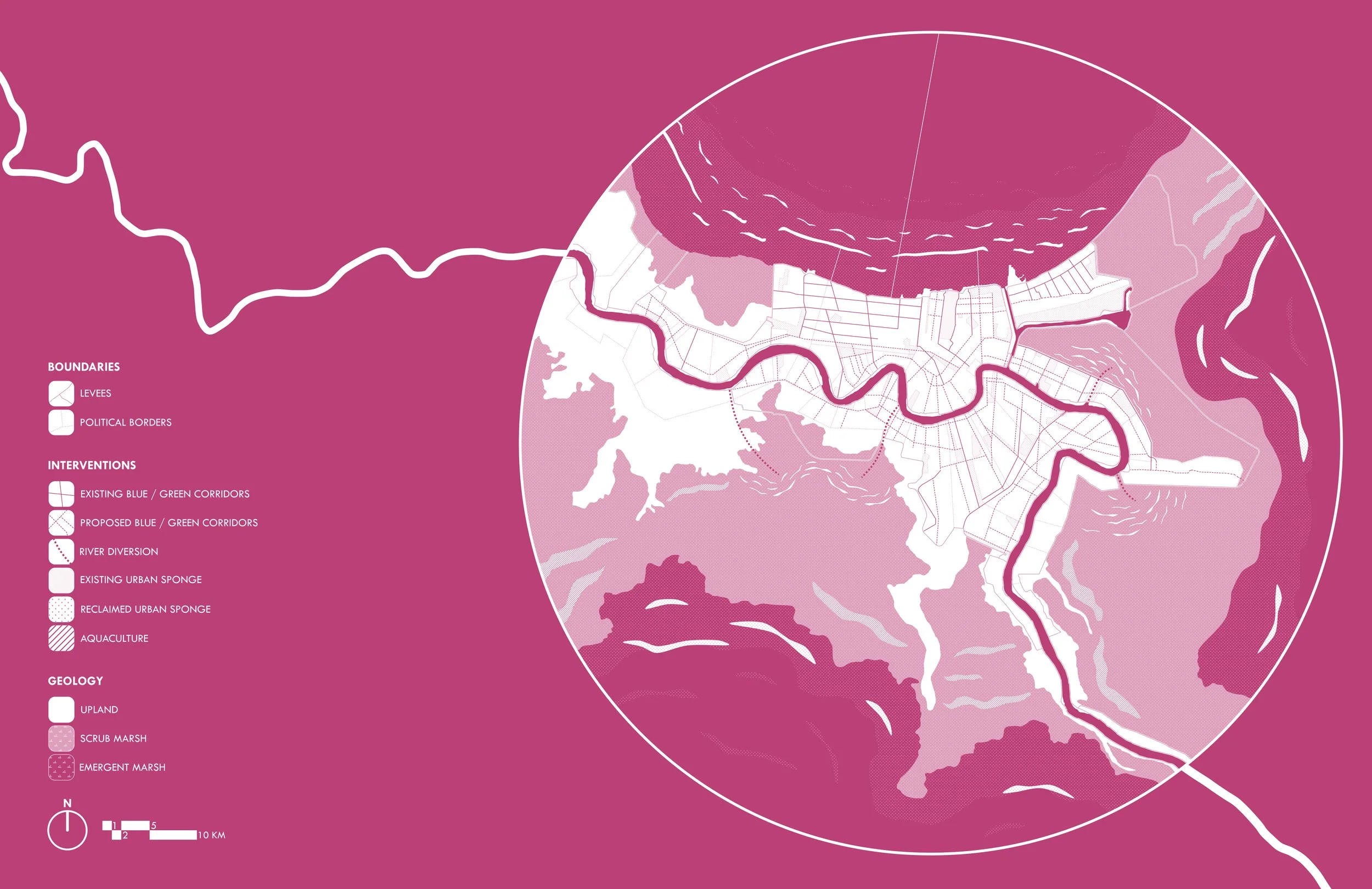*foreverNOLA | PRELIMINARY RESEARCH
It is no secret that our coastal communities face dire circumstances. However, the primary role of architects in a society is to craft a positive vision to aspire to and to draft the roadmap to achieve it. This project is the beginning of GOAT’s radically optimistic effort to envision the distant future for New Orleans and its surrounding communities. As with any architectural project, this one starts with pre-design research.
We begin to undertake this research from the radically optimistic viewpoint that the continued existence of our home, New Orleans, is non-negotiable. This perspective may seem like naivete or hubris, especially to those unfamiliar with New Orleans and the resilience of its people; however, we believe that optimism is what this moment in history requires of our profession and what the people of our community are demanding of us. We believe that pessimism is corrosive and to succumb to it is a subversion of the social responsibility placed on the architectural profession. While we should certainly advocate for measures and interventions that may avert the worst outcomes, the truth remains that these outcomes are largely beyond our control and may well become the parameters for our future work. Our role as the visionary designers of civilization and its manifestations is to use the parameters as they are presented to us and to craft a positive vision of the best possible future for life within them, drafting the roadmap to achieve it. We believe there is generative power in the creation of this vision.
The regional map that opens the gallery below assumes a future where sea levels rise unabated, but New Orleans harnesses the advantages of its geographic position to fortify its existence, evolves within and without its boundaries to adapt to its new reality, and endures as the cultural beacon it has been nearly since its founding in 1718. The other maps document the city’s past density, of both the population and the “ground” itself, current conditions, and an anticipated trajectory of each. Finally, we begin the work of envisioning the future experience of those that occupy these maps. Many of the ideas presented here are not new; many of them have existed in the imaginations of New Orleanians for generations and were more or less proposed by the stakeholders that weighed in on the city’s future. Others have already been proposed in some form or other by the many other visionary architects, artists, and creatives working in the city. Some are even already in motion. We begin to collect them here with the intent to positively re-frame the local, regional, and national conversations about our collective future and to create a framework for further investigation. There will be much more to come.









